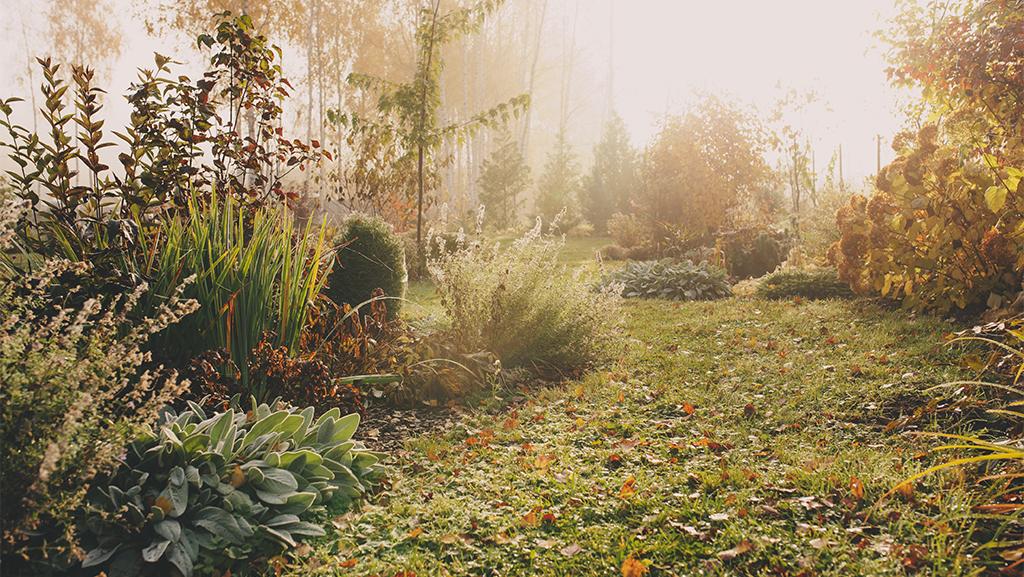How to Put Your Garden to Bed This Winter
Does that catchphrase, "put your garden to bed" sound familiar? If your idea of this task is raking up every last leaf and cutting back every perennial. (In order to create a manicured and tidy landscape.) We hope to convince you to rethink it.
For the scope of this blog post, "garden" means your ornamental plants. (We're leaving out lawns and vegetable gardens for now). The following winter garden preparation tips will help you create a more resilient and healthier garden. Also they'll help to preserve valuable habitats for beneficial insects and animals. The ones that rely on plant debris for shelter and food in winter.
1. Leave the Leaves
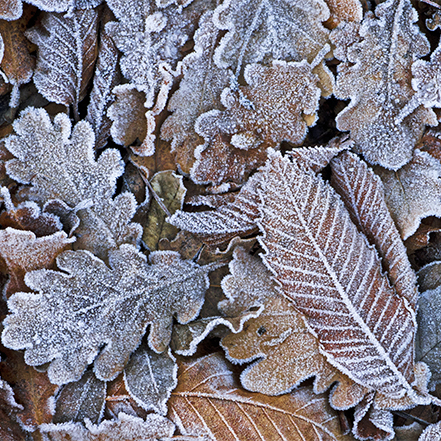
Ever wonder what nature does with the fallen leaves in the forest? Or, with the grasses and fading perennials in the prairie? Forests and prairies are terrestrial ecosystems. An ecosystem is all living things, including plants, animals, and other living organisms within a particular area. Also how they work together.
Our gardens are small-scale ecosystems. We can improve our garden’s ecological footprint by following nature’s lead. When you allow the stems of perennials and fallen leaves to remain through winter, that vegetative matter is broken down. This is with the help of bacteria, fungi, and small animals.
The decomposing matter creates a layer of debris known as duff or nature’s mulch. Nature’s mulch provides a habitat for frogs, toads, spiders, songbirds, and beneficial and predatory insects.
Due to habitat loss, the world’s insect population is dwindling. Their habitat includes our gardens. Also, our eagerness to eliminate any threat of insect damage has contributed significantly to their demise.
Are there insects feeding on our prized plants that do harm? Of course, but usually, the damage is cosmetic. If my garden plants don't have a few munched holes in them, then I'm not doing my part for nature.
When we eliminate pesticide use, our gardens will provide an important food source and housing for insects and animals. This means you and I are important components of our ecosystem.
My favorite resource is a book written by Jessica Walliser, Attracting Beneficial Bugs To Your Garden. I often reference her book, Good Bug, Bad Bug to identify the insects found in my garden. You can find a great visual guide to beneficial insects here, as well.
All that said, there are a few plants that should be cut back for the health of your garden:
- Bearded iris: Iris borer’s eggs overwinter on the leaves and stems of the iris plant. By cutting the leaves back and destroying them, you can reduce borers from your garden.
- Any plants commonly affected by powdery mildew, such as Bee Balm and Peonies. Don't leave these leaves in place through winter. (Unless you have mildew-resistant Monrovia-grown varieties like Bee-You™ and Balmy™ Bee Balm, of course!).
2. Winter Weed Control
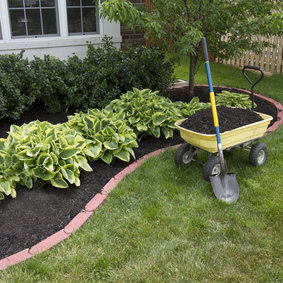
I appreciate that one person's weed is another person's wildflower. Therefore, I won't presume to tell you which plants don't belong in your garden. Especially when the one definition of a weed is a plant out of place.
Still, some plants that show up on their own in a garden can be so invasive. You absolutely do want to get rid of them. If you want to identify what you think's a weed, the Weed Science Society of America website has regional links. These can help you and offers best management practices.
Removing weeds will save you from having many more weeds in the spring.
Don't put weed plants or seeds in your compost pile unless it reaches temperatures greater than 140 degrees. You risk reintroducing them into your garden. They are best disposed of through your municipal composting program.
Apply 2-3 inches of mulch to prevent existing weed seeds in the soil from receiving sunlight that encourages spring germination.
3. Winter Watering
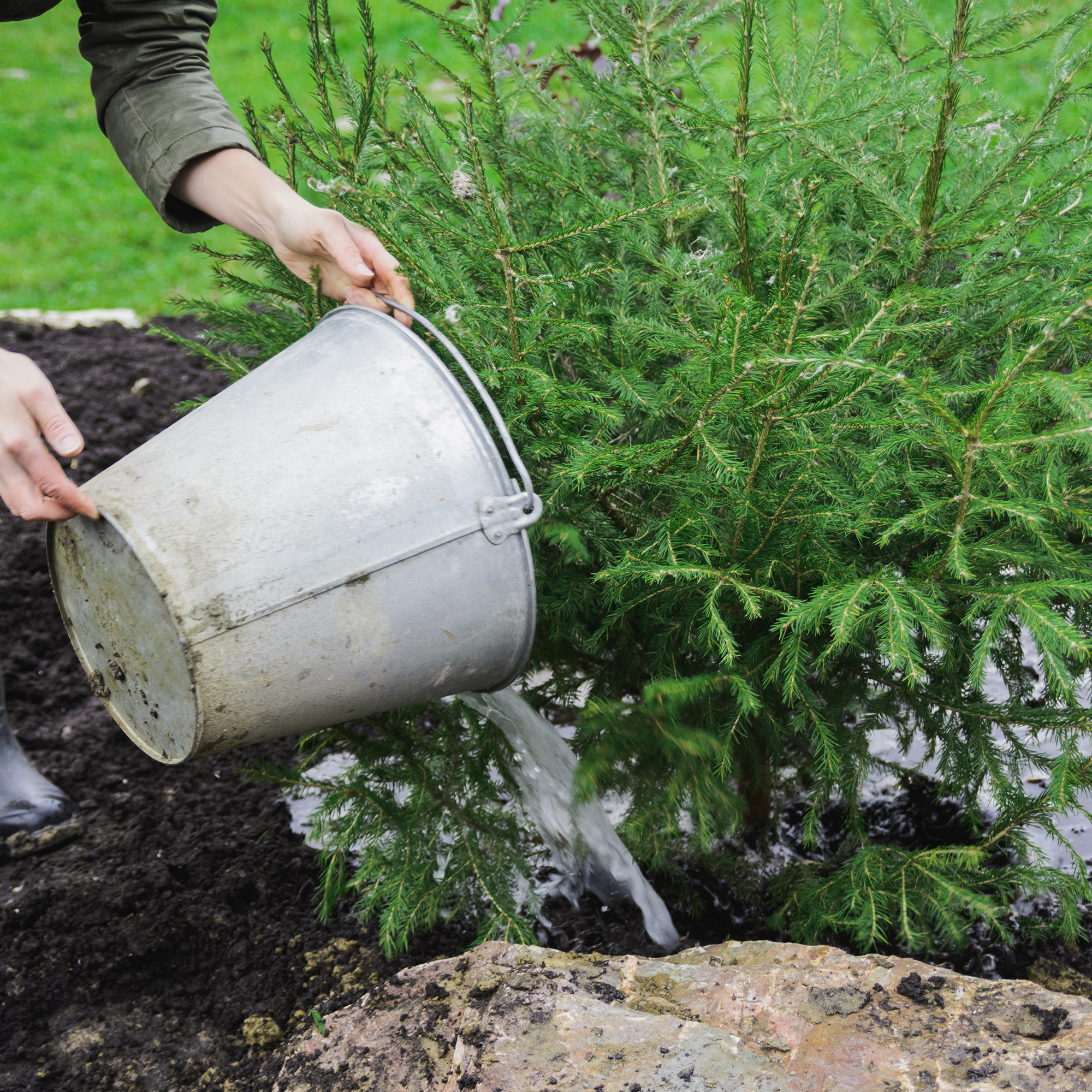
I know you just put away the hoses, and your irrigation system has been turned off for the winter. But, when natural rainfall doesn’t supply at least 1-inch of water a week, your plants won’t be well-hydrated through winter.
Using a rain gauge or tuna can is the best way to determine if your garden has received enough water. Watering benefits are two-fold: Moist soil holds heat longer and is more insulating than dry soil. Well-hydrated plants can better survive cold temperatures.
Also, dry periods during fall and winter can cause injury or death to parts of the plant root system. Thus, weakening the plant, which then subjects it to insect and disease problems. At first, affected plants may grow normally in spring, but parts may die later in the growing season.
Plants at greatest risk from a winter moisture shortage are trees and shrubs planted within the last five years. Also, fall-established lawns and evergreens.
When to water in winter
The ideal time to water is when the ground isn't frozen. Also, when there isn't any snow cover and temperatures are above 40 degrees. Watering mid-day allows the water to soak in before it freezes at night. Don’t forget to drain and put away your hose after each watering and drain your water spigot again. This can be tedious, but you’re protecting the investment you made in your beautiful garden— and your plumbing!
Fall mulching
Apply 3-4” of mulch to cover the roots of trees and shrubs. Be sure to keep mulch about 6” away from the trunk. Mulching with organic matter like leaves or pine needles helps retain moisture in the soil while also adding organic matter. Mulch prevents the ground from heaving during repeated freeze-and-thaw cycles. This may otherwise expose roots to cold temperatures and winter drying.
4. Improve Your Soil
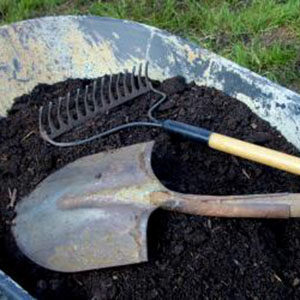
It might seem as if nothing is happening out there. However, under the surface, billions of insects and beneficial microorganisms are working away to improve your soil. Healthy gardens start with healthy soil, but how do you know your soil is healthy?
A soil test can determine if your garden is deficient in essential nutrients or conditions plants need to thrive. A basic soil test offered by county extension services will measure soil pH, potassium (K) and phosphorus (P). Also, calcium (Ca), magnesium (Mg), and sulfur (S).
When your soil is at the correct pH and contains the nutrients for your plants' needs, they'll grow more robustly. They'll also produce more blooms. In addition, your plants can better resist disease and pest infestations.
Additionally, organic matter is an important component of healthy soil. Testing for the percentage of organic matter in your soil is essential. An ornamental landscape should have, on average, five to ten percent organic matter. This percentage differs depending on your region. Check with your county extension service for optimal recommendations.
Add Organic Material to Your Garden Beds in Winter
Adding organic material, such as compost or mulched leaves, will increase organic matter in the soil. Improving your soil with increased organic matter is a continuing process. However, it is worth the effort to achieve the following benefits:
- Helps sandy soil retain moisture while it allows clay soil to drain more efficiently
- Promotes good drainage and aeration of the ground, which reduces runoff
- Feeds microorganisms
- Prevents soil compaction and erosion
- Stores and supplies nutrients
Any added organic material will decompose. Nutrients will filter into the soil over winter to be available during the growing season.
Amend all established and new planting beds with a generous amount of compost. It can be your own or what nature has provided in the form of fallen leaves. Keep mulch a few inches away from the plant’s stem or crown to avoid excess moisture and rot.
5. Winter Damage Protection from Deer and Harsh Weather
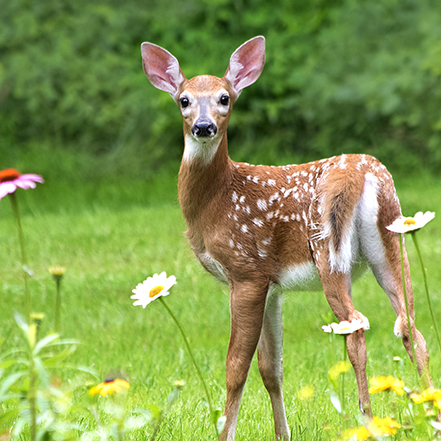
Oh, Deer!
Yes, dear gardeners, the largest, four-footed pest population has increased everywhere. They have habituated themselves to suburban and urban areas, often to their detriment; many are very hungry. However, with no natural predators, gardeners must take action to save their plants.
Get Monrovia's guide to deterring deer and finding deer-resistant plants here.
Keep Deer Out to Protect Plants
Fencing is the most effective barrier method to deter deer, but it can be costly.
There are a variety of choices for deer fencing at different price points that may fit your budget. I found the deer fence kits with poly mesh wire rolls—they should be at least 8’ tall—very easy to install. They are effective, affordable, and great for D-I-Yers who need to enclose large areas.
Deer are also unlikely to breach solid stockade-type wood fences. This is because they don't like jumping into an area they can't see. Wood fencing only needs to be about 5 feet high to be effective, which meets most municipal fencing height codes. Wood fencing is more aesthetically pleasing and offers privacy. It can also be customized to compliment your outdoor space and the architecture of your home.
There are many ready-made repellants that deter deer because of their unpleasant order. However, repellants are only effective if you consistently reapply them, especially after rain. Apply spray and wettable repellants with caution because many of them contain Thiram, a fungicide that is a neurotoxicant. Please follow the label directions and wear safety goggles and a mask when applying.
Prevent Damage from Deer and other Critters in Winter
Prevention is also the best way to safeguard your trees and shrubs in the winter. Especially from rabbits, mice, voles, and other rodents. In winter, deciduous trees become food sources for these rodents. Once the damage is done, so, often, is your tree.
Individual tree guards made from biodegradable plastic mesh tubing or solid plastic sleeves are very effective deterrents from rodent damage. As is chicken wire fencing. In most cases, it should extend 24 to 36 inches up the tree's trunk. High enough that rabbits and rodents won't be able to climb after a deep snowfall. If necessary, remove snow from the base of the tree to keep animals from reaching the upper branches.
Bury the bottom 3 to 5 inches below the ground. Or, pin the fencing with U-shaped anchor pins to prevent rabbits and rodents from crawling under.
Protect Trees and Shrubs from Winter Damage
Tree guards and wraps offer additional benefits of protecting young trees from winter sun and trunk splitting. Young trees with thin bark are most susceptible to temperature fluctuations in winter. A trunk's bark will expand in the warmth of sunny winter days. Only to shrink back again when the sun sets and the temperature drops.
You can leave tree guards on year-round, but you should remove and inspect them at least twice a year. Leave the wrap on too long, and you could be inviting pests and diseases.
Burlap protects trees and shrubs, especially evergreens, from heavy snowfall and damaging winds. A burlap covering helps the plants retain moisture and can also shield planting from sun-scald.
6. Late-Winter Pruning
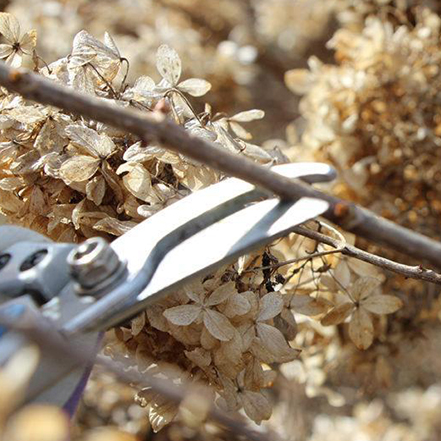
Yes, it is cold and possibly snowy, but late winter is the best time to prune many trees and shrubs. Most woody plants are dormant in winter, as are the pests and pathogens that can potentially invade pruning cuts.
Pruning helps maintain plant health and encourages good flower production. The lack of foliage makes it easier to see the branching structure. Thus, allowing you to prune for overall size and density while improving the plant's natural form.
This topic of what and how to prune in winter is important and deserves a blog post with detailed information. Fortunately, that information can be found in this comprehensive guide and this post on pruning flowering shrubs.
Design Tip #1: If there have been hard frosts in your area, prune American holly and evergreen branches. These can be safely pruned in December for decorating window boxes or making wreaths.
Design Tip #2: Pruning is not the answer to mistakes in planning. Select and place trees and shrubs in your garden with their ultimate mature growth in mind. This is to ensure there will be room for them to grow before planting.
Learn More About Gardening in Fall and Winter
- Sign up for our Grow Beautifully newsletter. You'll get more design inspiration, garden tips, how-tos, and first access to exclusive plants.
- How to Put Hydrangeas to Bed for Winter
- Boxwood Winter Care
- Use These Colorful Conifers to Transform Your Landscape
- Colorful Cold-Loving Conifers for the Winter Garden
- The Best Dwarf Conifers Offer Big Solutions
- Best Small Trees for Fall Color
- Fall Garden Refresh Webinar
- There's a Boxwood for Every Garden
- Landscape Design with Ornamental Grasses
- 5 Ways to Unlock Design Success with Shrubs
- How to Grow St. John's Wort and a Closer Look at FloralBerry®
- Top Tips to Select the Right Japanese Maple
- Make an Impact with These Unusual Types of Japanese Maples
- Fresh Plant and Color Combos for Fall Container Gardens
- Late Summer and Fall-Blooming Perennials for Long-Lasting Color
- Brighten Your Early Fall Shade Garden with These Plants
- Growing Gold: Light up your landscape with yellow trees and shrubs
- Grow fuss-free: 12 container garden ideas for fall into winter




